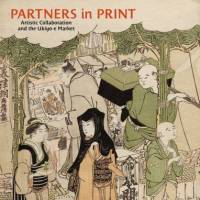The purported thesis of this book — that the art of publishing is a collaborative process involving the cooperation of writer, illustrator, patron, publisher and (shock) even consumer — seems obvious. Yet the four academic essays on ukiyo-e art contained within are both stimulating and beautifully illustrated.
Partners in Print: Artistic Collaboration and the Ukiyo-e Market, by Julie Nelson Davis
242 pages
University of Hawaii Press, Nonfiction.
In the first piece, Julie Nelson Davis explores the artistic heritage of the Kano school painter Sekien (1712-1788) and considers a woodblock print which muses on the "reality" of art itself. In essay two, we switch to an analysis of the 1776 illustrated book "The Mirror of Yoshiwara Beauties, Compared" and discover that seemingly stand-alone artistic depictions of beauty were in fact the 18th-century equivalent of product placement, in this case brothels promoting sex workers. Davis really hits her stride in essay three, when we uncurl a handscroll of around 1785, "The Scroll of the Sleeve," and reveal the sexually explicit shunga by Torii Kiyonaga (1752-1815) — Davis expertly pointing out what dress, hairstyles and the spaces occupied by Kiyonaga's subjects tells us about their status and relationships.
In her final essay, Davis scrutinizes one of the kibyoshi (yellow-backed books) so popular at the end of the 18th century, revealing the satire of author Santo Kyoden and his mockery of the trite neo-Confucian didacticism of the age.
The one person Davis fails to mention as part of the artistic process is the oft-neglected critic, therefore let this one make a gentle suggestion that any new edition be retitled "Decoding the Floating World," a title more befitting its intriguing contents.

















With your current subscription plan you can comment on stories. However, before writing your first comment, please create a display name in the Profile section of your subscriber account page.